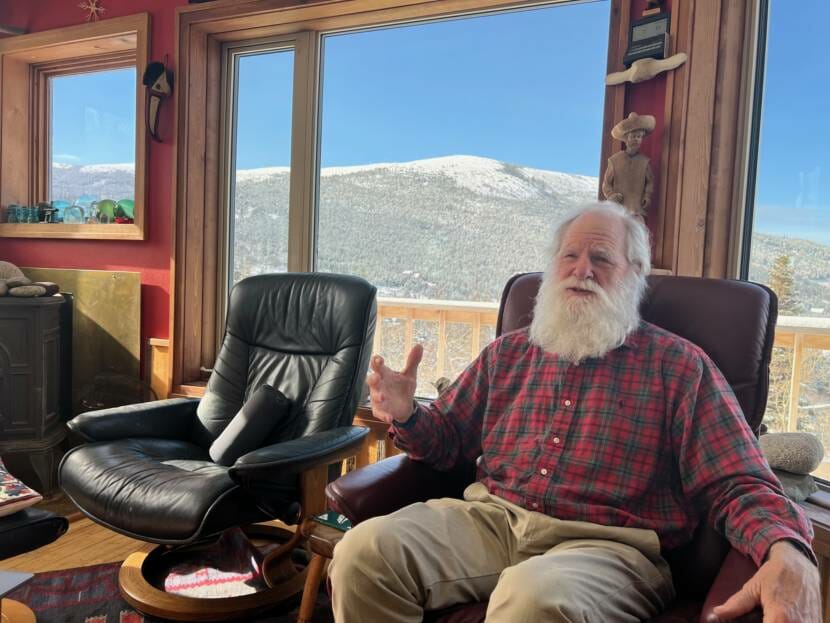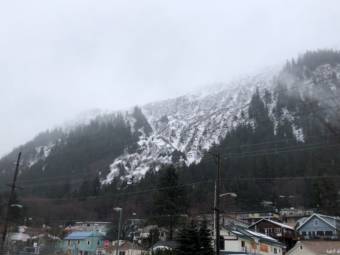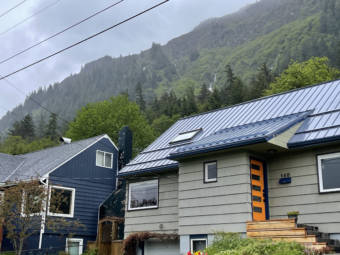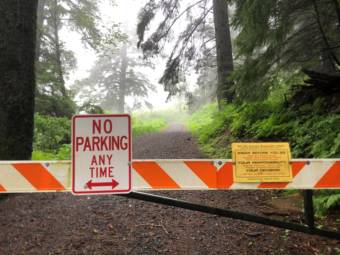
Residents of an Eagle River neighborhood cut off by an avalanche last month were reconnected Monday after crews finished clearing debris from Hiland Road. Municipal officials described the slide as a “100-year event.”
But one longtime avalanche researcher in the area says the risk of another large avalanche like it is probably greater than people might guess from those statements.
Doug Fesler is an avalanche expert and the founder, along with his wife Jill Fredston, of the Alaska Mountain Safety Center.
Fesler says more should be done to understand and avoid similar known avalanche paths because such large slides can be deadly.
Listen here:
The following transcript has been lightly edited for clarity.
Doug Fesler: We had a fair amount of snow — several feet of snow early in the winter. And then we had very cold temperatures, you know. So what that did is it made a temperature gradient in the snowpack, which triggered a process to create snow called faceted snow, and faceted snow is notoriously weak. Anyway, that condition existed down near the ground, and still exists.
But on top of it, now we’ve got several more layers. And we also had an event in December where we had two or three days of freezing mist, which created an ice lens on top of this. And then on top of that, there was more layers put up there.
On the night that this avalanche was triggered, the wind came up, big wind slab was formed, and it was off and running.
Casey Grove: It seemed like it caught people by surprise that this would have happened there in a way that it would have impacted houses. But is it really that uncommon for that area or for that actual slide path?
Doug Fesler: That was a bigger than usual avalanche, and terms were used like, “massive, huge,” and so forth. To me, it wasn’t massive, it was just big, given the size of that path. And given the recent history that we have, which is very little.
I’ve heard some people talk about it as being a 100-year avalanche. And by that they mean, that would be the biggest event to happen in 100 years. I don’t think it was a 100-year avalanche, though. I think it was somewhere between a 30- and 50-year avalanche. And, you know, we don’t know, and there’s no way to find out unless you have a history.
And I’ve spent 50 years in that valley and other valleys studying these avalanches and recording the events that come down, when they hit houses or come close to houses. This was the largest avalanche that’s happened in that valley in my tenure.
Casey Grove: And I guess when somebody says, “This is a 100-year event,” whether it’s a flood or an avalanche or whatever, or a 50-year event, that doesn’t mean once it has happened that it will not happen again for 50 years…
Doug Fesler: It doesn’t. That 100-year event or that 50-year event, that could happen in consecutive years. It could happen a century or more apart. And when I hear somebody say, “Oh, it was a 100-year avalanche,” I listened to it. And then the message in between is that this was a pretty large avalanche.
Casey Grove: What is being done to sort of figure out what risk may still exist there. Is there enough being done? Do you know?
Doug Fesler: No, I don’t think there’s enough being done. I think that the municipality needs to go back, and number one they need to approve the ordinances for mitigation of these houses. They shouldn’t be letting people build houses in avalanche paths. It’s stupid, because it’s just going to keep coming back time and time again, it’s not going to go away. The houses can be somewhat protected, in some cases considerably protected. In other cases, just marginally protected. But protection isn’t the answer. Really, avoidance is the answer.
Casey Grove: You were saying that it could be even less (than a 100-year even), like 50 or something like that. But in the Alps and little villages over there, they’ve got so much more record that they can kind of make those claims maybe more accurately, right?
Doug Fesler: Exactly. I mean, literally, they have records going back to the 1300s. And they have, you know, certain landmark buildings like a church or something in a small village where the avalanche is remembered to have stopped right on the edge. You know, “God made that happen.” And they didn’t forget it. And so it’s nice to have those kinds of records. We don’t have anything close to that. And most people are pretty clueless when it comes to avalanches. They think they know they’re in a path, but what does that mean? But if you wake up in the morning and you open the blinds and you see, “Oh my god, look at the backyard. It’s totally filled with snow!” You’re looking up at it, you’re not looking down at it. That usually makes an impression on people where they want to know a little more.
Casey Grove: And that seems like maybe the least worst scenario, would be just waking up and seeing some snow filling up your backyard. But what’s the worst case scenario for somebody that’s in a slide path like that, that it goes and it impacts houses?
Doug Fesler: Well, unfortunately, the worst impact is the house gets obliterated and the people in it all die. That’s the worst. I remember one woman who was sitting in a Lazy Boy recliner with her remote control in her hand. She was obviously watching some show on TV. Big avalanche came down and took the entire house off a concrete block foundation, just gone. (The) house was obliterated into little pieces about a foot long maybe and blowing all the way out into the lake. About a half-mile of debris, lots of debris, all the insulation, the boards, all splintered pieces, it was unrecognizable. That’s the worst case.



